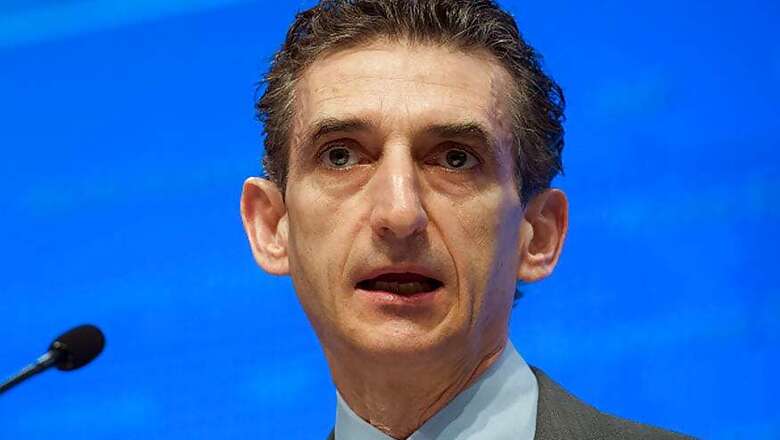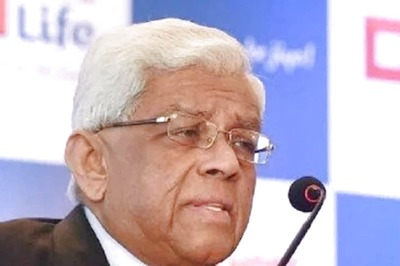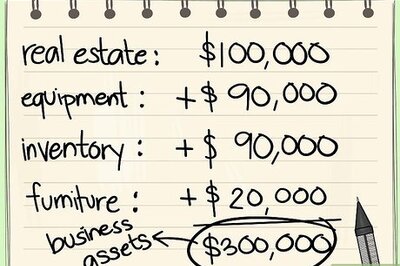
views
India continues to be a bright spot for global investors, who are looking forward to the goods and services tax regime after the demonetisation shocker. Talking about the latest World Economic Outlook, Gian Maria Milesi-Ferretti, deputy director of research department at IMF tells News18’s Marya Shakil that global growth will remain uneven and structural reforms are need of the hour. Edited excerpts:
The IMF has just trimmed India’s growth forecast for 2017, citing demonetisation as the reason. Is this a fair assessment?
Yes, it is. We think the impact of demonetisation on the activities of the informal sector, which is more reliant on cash, has been noticeable. It has been mostly felt in the latter part of 2016-17, compared to the first quarter of the current fiscal year. The growth forecast is still 7.2% for India, but a bit less than what we were forecasting last October.
How do you see India’s growth story playing out?
India is still the fastest growing large economy in the world… we actually have a forecast for India which envisages somewhat faster growth, going forward, particularly thanks to the implementation of GST.
How attractive is India looking to foreign investors right now?
On the positive side, GST is going to facilitate the inter-state trade better. It is going to help trade be more efficient, increasing growth. Of course, high growth rate in a large economy with a lot of aspirations of reaching higher income levels is a very attractive proposition for foreign investors. At the same time, there are issues to be dealt with that have to do with strengthening the financial stability, and system that in certain parts has some strains, and making sure also that corporate debt is kept under control.
Tell us about your best and worst case scenarios for India.
I think we have a strong outlook in our baseline for India. I can predict for an economy of this size, a growth rate of 8%. It’s a pretty strong assessment. Of course, India is an open economy and is affected by what happens in the world. So I would like to highlight the risks that come from external sources which could be associated with international market and financial turbulence. Right now, we see markets being very optimistic but clearly external financing could be affected if markets become very risk averse, and, of course, if domestic circumstances and reforms were to change.
Do you think the Modi government has done enough on the reform front?
Clearly, a lot has been done on the reform front. India still has big structural challenges to overcome and so the reform agenda… there is still a lot that can be done to strengthen the economy’s prospects down the road.
What economic reforms do you think India needs to implement?
We have discussed some and now need to get down to the specifics of the implementation of the GST, but as I say strengthening the banking system is clearly an issue. You still have a relatively large fiscal deficit and public debt that needs to be gradually brought down. You still have parts of the corporate sector that face challenges because of high debt, so there are many structural issues that can be addressed in a gradual fashion. If resolved, they could make India even more attractive to foreign investors and we need stronger growth prospects.
The IMF forecast looks reassuring with global growth pegged at 3.5%, compared with 3.1% in 2016. What is your broad outlook?
As you underscored, for a pickup in global growth in both 2017 and 2018 which is fairly broad base both in advance economies, say relative to 2016 pretty strong pickup in the US which had relatively weak 2016, but also emerging and developing economies are projected to have a stronger outlook. Still, a lot of heterogeneity. You have India growing at over 7% and you have some commodity exporters still struggling. So it’s not a uniform picture.
There is a global trend on governments resorting to protectionist stance. How big a threat is it to the economy?
I would put it slightly differently. I think there has been clearly more rhetoric about protectionists, and we do hope that this remains rhetoric, rather than being converted into inward looking policies. We think despite the fact that some countries have been losers from trade, in the aggregate trade has been a strong engine for growth. And it would be detrimental to the prospects of the world economy to weaken this engine, particularly at a moment when the prospects for productivity growth are not stellar, and when many countries are still struggling with sub-par growth.
Russia has recently forecast oil at $40 per barrel. Considering the political uncertainties in the Middle East, what trajectory do you think oil will take?
Our oil price forecast is based on the future prices, which envisage relatively stable oil prices at little bit above $50 a barrel, which is where they stand now. How geo-political uncertainties could affect prices… it could go either way. Clearly, a weaker world economy and more risk aversion could imply lower oil prices. If some oil exporter cuts production, the prices could move in the opposite direction.
Do you see a revival in global commodity cycle?
We clearly have seen a stabilisation in some recovering commodity prices. I would say, for the aggregate, this is coming primarily from a more secure prospects for global demand and that is in a sense a good reason for rising commodity prices as oppose to supply disruption. So clearly, a stronger global economy is going to help.
What about the emerging economies, will they finally come out of the woods?
I would go back to the theme of differentiation. Some emerging economies are doing quite well on the growth front, particularly emerging economies in Asia including India. Others, primarily commodity exporters, are struggling with a painful adjustment to lower commodity prices. For these, the outlook that we have is improving but in level terms the growth rates are going to remain quite below, compared with what they experienced during the years of commodity boom.



















Comments
0 comment